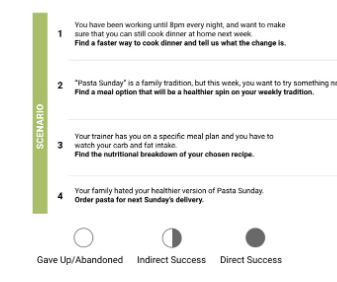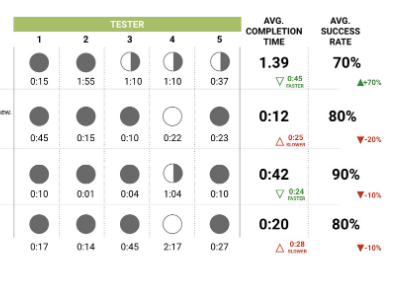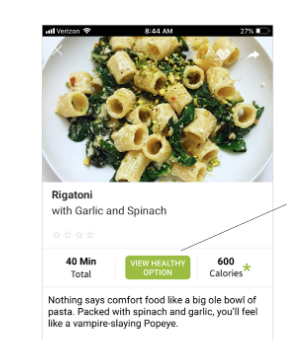The contemporary business environment is challenging based on the increased demands of customers. Companies are struggling to meet consumers’ needs and want to remain relevant and competitive in various operational niches. Clients prefer direct involvement in consumption-related challenges; Hasani et al. (2020) contributed to the analysis of user-centered design in prioritizing customer needs.
At the same time, Marcus and Wang (2017) argued that the direct involvement of customers in a company’s problem-solving scheme is achievable with the adoption of productive and realistic human-centered design (HCD). The frameworks of HCD concentrate on improving clients’ user experiences (UX) with particular products and services (Ardito et al., 2016). The human-centered design makes sense to industries because it targets creating meaningful production and aligning services that develop relevant user experiences. HelloFresh, a meal-kit company, is an example of modern enterprises adopting HCD to improve consumers’ UX. Reviewing how the company delivers boxes of fresh foods to clients’ doorsteps projects the application, significance, and changing roles of HCD on user experiences.
Key Terms and Historical Context
User experience: the terminology defines the process design implemented by teams to produce meaningful experiences for product and service users.
Human-centered design: is a problem-solving technique prioritizing consumers of various products and services at the center of a developmental process. The approach allows organizations to put the interest and needs of their audiences ahead.
Designer: A planer who draws the workability of a solution to an isolated challenge; in this case, the designer is the individual in charge of executing all events associated with HCD.
Herbert Simon conceptualized the concept of HCD, but it has a rich history from the 1950s. Simon, the American political scientist and general problem solver championed the idea of human-centered design at Stanford University. The computer science influencer first mentioned design frameworks as a thinking model in 1969. In addition, the contributions of Mike Cooley in 1989 also make a significant component in the description of the history of HCD. The ideologies of human-centered design were first documented in the Sciences of the Artificial book: according to Kurosu (2017), the descriptions were founded on cognitive psychology, ethnography, and sociology sub-topics. The application of HCD began in classes; Stanford University design school students studied human-centered design.
Simon developed HCD to shape the thinking and service design among multiple firms. Afterward, HCD was leveraged by the IDEO design and consulting firm before its diversification to global business. IDEO created a free design kit in 2009 to diversify the frameworks and techniques of HCD to help organizations understand human needs and gain insights into problem-solving process. Besides, Cockton et al. (2016) commended that human centered-design incorporates innovative solutions in correcting rising issues within internal business entities. Some of the valuable terminologies used in the report include:
HelloFresh Services
HelloFresh successfully adopted the technique of HCD to design, manage, and develop solutions to shopping problems. Thomas Griesel, Dominik Richter, and Jessica Nilsson recognized the difficulties individuals face in selecting healthy meals and developing appropriate shopping skills for groceries. The three partners collaborated and founded the HelloFresh public trading meal kit to respond to the challenge. HelloFresh majored in user recipe generation because it resonated with the struggles faced by such individuals in tracing healthy meals.
In Forsey’s (2018) opinion, the firm owners hired designers and engineers to develop and integrate recipe features into the existing App. The new features’ goal targeted improving the user’s experience. Giacomin (2014) stressed that HCD designers develop interfaces that increase the engagement of the companies and product or service consumers. Similarly, the engineers in charge of the App adopted the skills of HCD in improving users’ connectivity to the firm’s platform.
Critique
Increasing the lifetime value of customers remains the priority of global organizations, the outcomes of such strategies facilitate productivity. Walden et al. (2020) compares human user center-design to contemporary managerial strategies and policies in technology driven firms. HelloFresh is one such type of an organization adopting the HCD problem-solving approach to preventing her customers from skipping and canceling their membership. The report confirms that HelloFresh effectively implemented HCD based on her earlier choices of interviewing users in the initial steps of the project.
Active, long-term users of HelloFresh agreed that the implementation of interactive UX contributed to their loyalty and increased purchasing and dependency powers in the industry. The development of the user’s generated recipe feature in the App made sense to HelloFresh because it enabled consumers to save time and access healthier meal kits (Jainarain, 2019). Secondly, the entry of the HCD component in HelloFresh’s application provided better experiences for users to navigate the goals of the enterprise. Incorporating a few rounds of mid and high-fidelity prototypes in the App usability testing facilitated the success of HCD in HelloFresh.

Human-centered design strengthened HelloFresh’s project of saving clients’ time in making orders. Unlike the past experiences, the users of the newly created interface enjoyed the shortcuts to healthy meal preferences and preparations. Dopp et al. (2020) stated that aligning user-centered experiences and implementation strategies enhance healthy relationships among customers and organizations. The first step of developing a human-centered design foresaw the hired engineers taking final sketches from the design studio and turning them into various fidelity types. HCD strengthened HelloFresh’s development of a quick timer that served the user’s interest in mastering quick cooking shortcuts.
The project was successful with the incorporation of a future objective of calory burning. The innovation of the new feature in HelloFresh’s App enabled the organization to develop a low-calory swap toolkit. The framework was beneficial to users since it focused on the healthy twists generated by healthy meal choices. Furthermore, the adoption of the human-centered design impacted users’ health directly. Although the designers were sure of the time-saving element of the App, it was essential for the team to improve certain features. One such sector involved the QuickTime option; at first, the element did not work efficiently because it did not attain the objective of cooking.

Human-centered designs end successfully with the presence of skilled interface designers and engineers. In this case, Forsey (2018) noted that the human-centered designers involved HelloFresh’s project participants from the start to the end of problem identification. Human-centered designers incorporated users’ emotions, thinking, and goals in linking compelling offers of time management of calory burning throughout the project. Secondly, the designers participated in the innovation of solutions to the unhealthy meal preferences of the platform users. Finally, the designers organized and controlled the design of the alternatives to the unhealthy eating problem-solving process.

Individual Position Statement
The transition of testing prototypes from mid-fi to HiFi was an unexpected situation that changed my approaches to interaction design differently. There was no need to frustrate users with the technical recipe interface during testing. I think the public meal kit would have completed the testing of the prototypes in the three phases of HCD before subjecting it to users for testing purposes. In my opinion, the goal was to increase consumers’ engagement with the firm; thus, educating the team on the App’s usability was more beneficial than subjecting them to testing the project’s prototypes.

References
Ardito, C., Baldassarre, M. T., Caivano, D., & Lanzilotti, R. (2016). Integration of human-centered design and agile software development practices: Experience report from an SME. Human–Computer Interaction Series, 117-135.
Cockton, G., Lárusdóttir, M., Gregory, P., & Cajander, Å. (2016). Integrating user-centered design in Agile development. Human–Computer Interaction Series, 1-46.
Dopp, A. R., Parisi, K. E., Munson, S. A., & Lyon, A. R. (2020). Aligning implementation and user-centered design strategies to enhance the impact of health services: Results from a concept mapping study. Implementation Science Communications, 1(1).
Forsey, C. (2018). Using human-centered design to create better products (with examples) [Web log post]. Web.
Giacomin, J. (2014). What is human-centered design? The Design Journal, 17(4), 606-623.
Hasani, L. M., Sensuse, D. I., Kautsarina, & Suryono, R. R. (2020). User-centered design of E-Learning user interfaces: A survey of the practices. 2020 3rd International Conference on Computer and Informatics Engineering (IC2IE).
Jainarain, T. (2019). HelloFresh. Feature Implementation-A UX Case Study. Medium.com. Web.
Kurosu, M. (2017). Human-computer interaction. Interaction contexts: 19th International Conference, HCI international 2017, Vancouver, BC, Canada, July 9-14, 2017, proceedings, part II. Springer.
Marcus, A., & Wang, W. (2017). Design, user experience, and usability: Theory, methodology, and management: 6th International Conference, DUXU 2017, held as part of HCI international 2017, Vancouver, BC, Canada, July 9-14, 2017, proceedings, part I. Springer.
Walden, A., Garvin, L., Smerek, M., & Johnson, C. (2020). User-centered design principles in the development of clinical research tools. Clinical Trials, 17(6), 703-711.